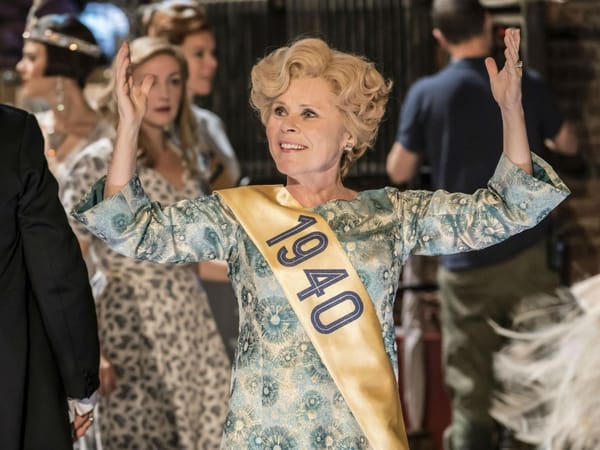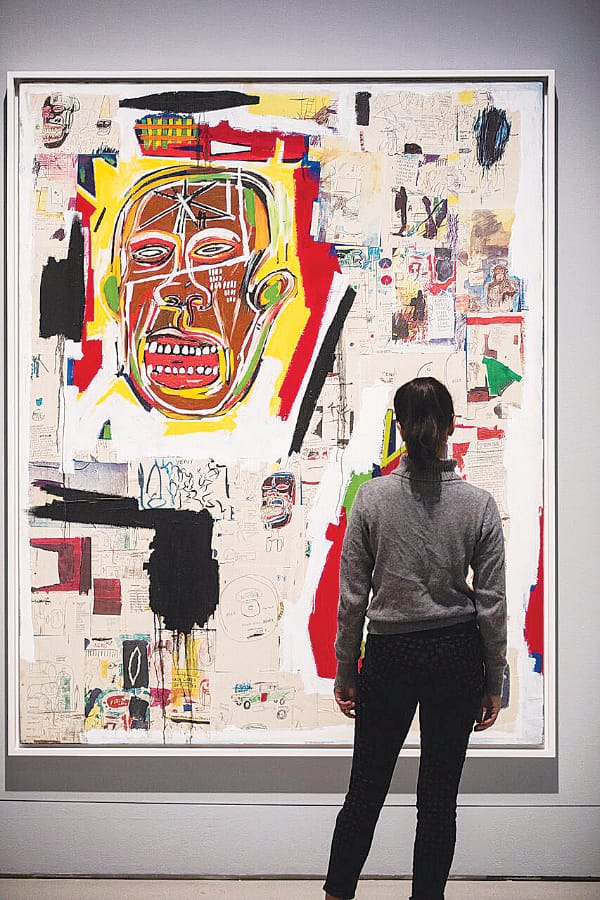Making it on their own: Barbican Centre’s celebration of young talent
Just as Jean-Michel Basquiat surrounded himself with artists, the Barbican has put together a day of collaboration between key players in the London arts scene.

In conjunction with their retrospective on the American artists Jean-Michel Basquiat – Boom for Real – last Saturday The Barbican held Too Young for What: a celebration of Basquiat’s legacy and the youth working in London today. In the cavernous halls of the Barbican Centre, zine makers, short film directors, poets, and photographers set up workshops, encouraging the public to get involved and displaying their art. I made a zine, watched a short film, and listened to some poetry. It was all about collaboration and identity, which were themes strongly apparent in the Basquiat exhibition.
Basquiat left home when he was 17 and started his art career as a graffiti artist in New York City, a grossly deprived and bleak city. Graffiti became popular at this time (1980s) to brighten the harsh, brutalist environment and leave statements of protest. Basquiat collaborated with a school friend Al Diaz to create the graffiti tag SAMO©. Their graffiti was unusually poetic and became the talk of New York’s artistic circles. Eventually when the duo’s identities were revealed SAMO© disbanded. Within a few years, Basquiat’s fame had grown, leading most from an unlikely friendship with Andy Warhol whom he met by selling him three handmade postcards, each for a dollar. During his life, tragically cut short by drugs, Basquiat formed a community around a close-knit group of artists who would gather to party, play New Wave music and make art.
“Basquiat formed a community around a close-knit group of artists”
This spirit of entrepreneurship and working with a range of contemporary, unusual media, creating spaces was at the centre of Too Young for What, in which attendees, particularly young people, were encouraged to get involved in making art.
In one of the rooms, Holly Casio was running a workshop on zine-making. Casio is an artist who makes zines – cheaply produced magazines – on the themes of self-exploration. Her work has its roots in pop culture and has strong feminist and queer bias. The latest feature from her zine is a warm, educational, and humorous comic on OCD. It is illustrated with deceptively simply linework, brimming full of expression, reminiscent of Nick Sharatt’s illustrations for children’s and young adult fiction such Jacqueline Wilson’s Tracy Beaker.
Also featured was Jacob Sam-La Rose, a poet whose work has now been featured in some English A-Level curricula. He lead a workshop promoting spoken word emphasizing the importance of creative expression and collaboration between artists. Highlighting that the best work comes from learning from others and exploring oneself in relation to one’s peers. Rose’s connection to Basquiat was apparent – he’d written a poem about Basquiat’s confidence the young artist had in his own art. In an age where young artists are increasingly asked to be their own promoter and advocate, Sam-La Rose is trying to battle the misconception many young people have that because of their background they cannot succeed in the world of art, and trying to promote a the space for people to develop this confidence and the idea that anyone can write poetry.
“Jacob Sam-La Rose is trying to promote the idea that absolutely anyone can write poetry”
Not all of the works featured had direct links to Basquiat: Grasp the Nettle, a feature length documentary made by the WeAreChange collective (which is available on YouTube) concerns a group of lands rights activists struggling against corporations, government, and police in order to set up a eco village in an abandoned plot in Brentford. They aimed to be entirely self sufficient – live literally off the (National) grid and survive off food they collected in supermarket skips. In doing so they attempt to create a self-made community away from an increasingly consumerist world, exploring a rebellion against the state and modern way of living. The film shows how the village soon attracts outcasts who most importantly found a sense of place in this community.
In bringing together the many facets of Basquiat’s work and psyche, the Barbican created a successful day that will hopefully inspire a new generation of young artists to believe that they can build their own communities and succeed in the world of art.
Too Young for What
5 Stars
Where? Barbican Centre
When? 7th October









